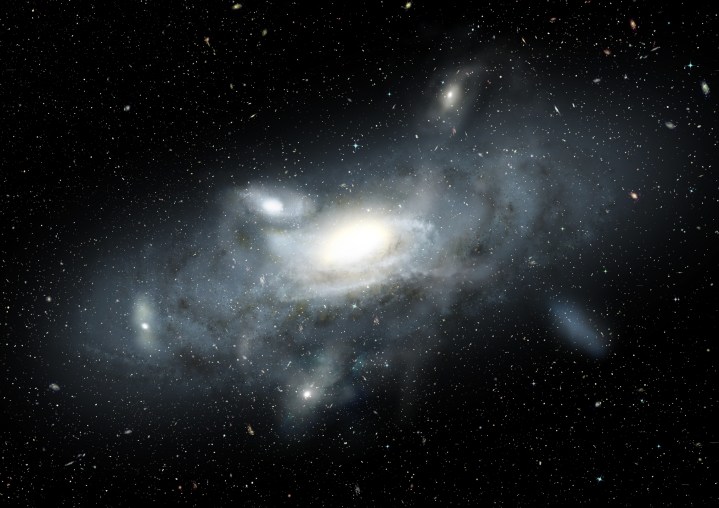Data from the James Webb Space Telescope has given a glimpse into what our galaxy was like in its formative years. Webb observed a galaxy called The Sparkler, which is analogous to what the Milky Way would have been like when it was young, when it had less mass and only a handful of globular clusters.

Our galaxy is one of the older ones in the universe, as it is around 13.8 billion years old. Over its life, the Milky Way has grown as more and more stars formed, until it reached its current mass of around 1.5 trillion times the mass of the sun. It also now hosts around 200 globular clusters, which are dense clusters of stars.
By contrast, the Sparkler galaxy has just 3% the mass of the Milky Way and only 24 globular clusters. But this small galaxy is growing as it gobbles up nearby satellite galaxies and globular clusters, and it is predicted that it will eventually grow to match the mass of the Milky Way.
“We appear to be witnessing, firsthand, the assembly of this galaxy as it builds up its mass – in the form of a dwarf galaxy and several globular clusters,” said lead author Duncan Forbes of Australia’s Swinburne University in a statement. “We are excited by this unique opportunity to study both the formation of globular clusters, and an infant Milky Way, at a time when the Universe was only 1/3 of its present age.”
The Sparkler Galaxy is extremely far away, so its light takes billions of years to reach us. Researchers were able to get a better look at it using a technique called gravitational lensing, which means they are seeing it as it was around 9 billion years ago.
This ability to see a galaxy growing just 4 billion years after the Big Bang can help us understand the formation of globular clusters, according to co-author Aaron Romanowsky: “The origin of globular clusters is a long-standing mystery, and we are thrilled that JWST can look back in time to see them in their youth.”
The research is published in the Monthly Notices of the Royal Astronomical Society.



